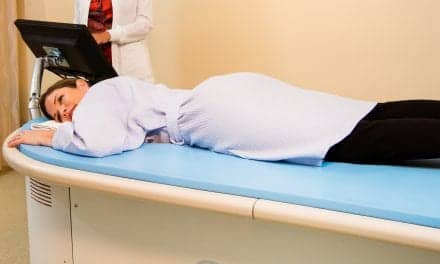
|
Marketing, Promotion, Public Relations |
Train Now and Gain Marketing Power
Bringing City Care to the Country
Train Now and Gain Marketing Power
The idea of a safe, noninvasive means of determining colorectal cancer is exciting for many radiologists. But the most promising of these technologies, virtual colonoscopy, can pose a steep learning curve, and centers may not realize immediate benefits without proper training. A new firm focusing on instruction and training in virtual colonoscopy promises to bring imaging centers return on their investment, and a means to market themselves to payors and patients.

|
VirtuoCTC, founded by Perry J. Pickhardt, MD, and David H. Kim, MD, facilitates the process of incorporating this new virtual technology, formally known as CT colonography (CTC), into clinical practice. VirtuoCTC will help radiologists implement CTC in their practice through hands-on training courses, a variety of useful templates, a comprehensive teaching file, and clinical database program. With a comprehensive CTC program on site, imaging centers will have a powerful new service to market.
“There is a learning curve in undertaking CTC, both in the technical performance and in the interpretation,” said Pickhardt. “Through its products and services, VirtuoCTC hopes to help the radiologist draw on the clinical experience and expertise of a proven large-scale CTC screening program (more than 5,000 patients screened to date). Hopefully, the radiologist can quickly become expert in CTC matters and avoid common pitfalls to provide high-quality interpretation and to run an effective screening program, one that is highly attractive to patients.”
Colorectal cancer is a frustrating condition: it has extremely high prevention rates upon early detection (90%), but most patients forgo traditional screening measures due to discomfort and risk. CTC represents an appealing alternative to conventional optical colonoscopy for patients, one that doesn’t require sedation or invasive procedures. Instead it provides radiologists a computer-based three-dimensional rendering to detect colon polyps and other anomalies.
VirtuoCTC was formed to help radiologists gain the skills necessary to perform and interpret CTC exams, and in the process the company helps imaging centers develop a valuable, innovative, yet legitimate service that can bring in more patients.
“We provide proven protocols and strategies to run an effective screening program for efficient throughput of large numbers of screened patients each day,” said Kim. “VirtuoCTC’s experience, products, and support can provide the needed legitimacy for a new CTC program and a means of marketing the service. Quality is being demanded by patients and payors; we will help to ensure that quality for a CTC program.”
The training offered through VirtuoCTC comes from a comprehensive CTC teaching file complete with more than 50 proven cases. The teaching file covers the diverse spectrum of colorectal findings encountered in CTC screening, and is available in formats for multiple CTC providers, including DICOM and Viatronix. VirtuoCTC also offers a clinical CTC database program that allows for easy tracking of clinical results, patient follow-up, and program quality assurance. Multiple templates are also available on the Web site, including bowel prep instructions, CT protocols, and a CTC dictation template to facilitate the setup of a successful clinical CTC program.
“The hands-on training allows direct one-on-one interaction with two leading CTC radiologists,” said Pickhardt. “Participants can ask specific questions on how to best utilize different detection strategies to maintain high sensitivities as well as to appropriately utilize 2D techniques to confirm potential polyps. As the participants gain expertise, the quality of their interpretations will improve and the interpretation times decrease. This allows increased numbers of people who can be screened per day while maintaining quality.”
—Amy Lillard
Bringing City Care to the Country
Time away from work. Insurance costs. Transportation issues. When Gundersen Lutheran Medical Center, of La Crosse, Wis, began investigating why 40% of women in the surrounding rural communities weren’t getting screening mammograms, the health system discovered that they didn’t have the time, the money, or the ride.

|
| Digital mammo is “being rolled out” in rural America. |
So Gundersen decided to transport the technology to them, right to the parking lots of their work sites. Together with Oshkosh Specialty Vehicles, an Oshkosh Corp company, Gundersen unveiled a new mobile digital mammography examination vehicle during a September fund-raising event.
“One of the things that we’re proud of is that Gundersen has decided that there will be no barriers for women,” said Gaile Jago, clinical manager of program development for the Norma J. Vinger Center for Breast Care. “Regardless of what woman knocks on our door, whether she has no health insurance or a high deductible, Gundersen has agreed to sponsor her mammogram and take her all the way to treatment if that is what’s necessary. We could give iway free mammograms only, but what if you find a breast cancer? It gets expensive fast. Our organization stepped up and said it is the right thing to do.
“The fact is women in our communities aren’t getting mammograms. They don’t have health insurance. We’re going to eliminate those barriers so they don’t have to pay for it,” Jago said.
Made possible by funding and support from Rep Bruce Braley (D-Iowa), the purchase of the 40-foot examination suite will bring the largest digital detector in the mammography market to women in Gundersen Lutheran’s service area of Wisconsin, Minnesota, and Iowa. The GE Senographe Essential digital mammography system also advanced ergonomic design, optimized patient comfort, and seamless workflow connectivity, according to Gundersen. Specifically, it offers a slide-out section for 271 square feet of space, a waiting and reception area, two changing rooms, a spacious exam room, and a rear galley area for medical staff.
Because the mobile unit is such a new addition, Gundersen has not done a big marketing splash just yet. Instead, it is focusing on reaching out to rural hospitals. The health system wants to send the message that the technology is meant to be integrated into their communities, not take them over.
“We’re kind of a hub-of-a-wheelsystem here,” Jago said. “Gundersen spreads out over a 150-mile radius. In that territory, we have regional hospitals that we don’t own, but that we support. We wanted to be respectful of those community hospitals and make sure they know that when we travel into the communities, their communities saw it was a partnership and not a big mother ship descending onto smaller communities.”
Another major push, in terms of an outreach campaign, is targeted at local businesses. One of Gundersen’s first events was held at an Ashley’s Furniture store, where two technologists labored from 5 am until 7 pm to screen approximately 120 women in 4 days. Jago reported that the technologists performed a number of baseline mammograms for women in their 50s and 60s—”well beyond the baseline age.” When Gundersen workers asked these women why they opted to undergo the procedure, patients would respond, “How can you pass it up? My employer is paying for it, it’s right here where I work, it’s convenient, and it’s free,” Jago recalled, adding “that’s what we’re primarily pushing right now with businesses. We’re looking into helping them reduce health care costs by screening their employees and catching breast cancer at its earliest, most treatable stage.” This month the unit will be traveling to a family-owned grocery story to offer mammography services to the site’s workers.
Gundersen’s Business Health department will continue to develop business partnerships, and through networking, Gundersen hopes the message will be spread, Jago said. It already is receiving great feedback from the patients it has served. “The women see it’s quick, easy, and affordable,” Jago said. “They see that they can have big city care in their rural community.”
Working with the American Cancer Society and state wellness programs, Gundersen aims to identify areas that are especially underserved, including Native American reservations and Amish and Mong groups in the area. Both of these populations are particularly known to be noncompliant, Jago said, and the challenging goal is “to work on getting into their culture and helping them to see the benefit.”
Jago looks to the future with great optimism. “We want to book the unit so that it’s out every single day,” she said. “Our hope is for 3 years from now to be booked solid so there aren’t any open days.”
—Elaine Sanchez





